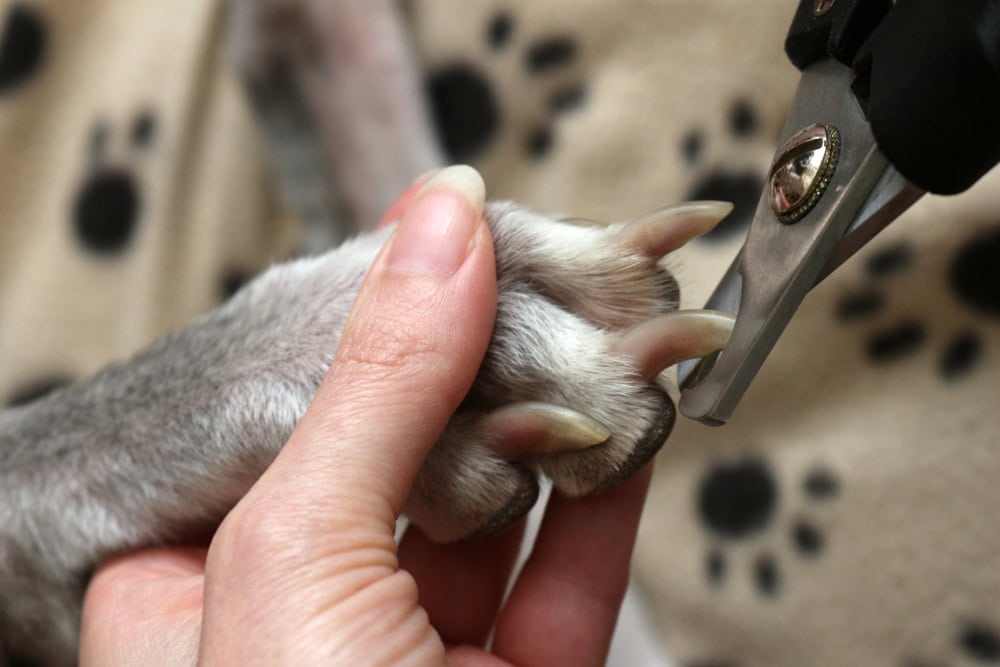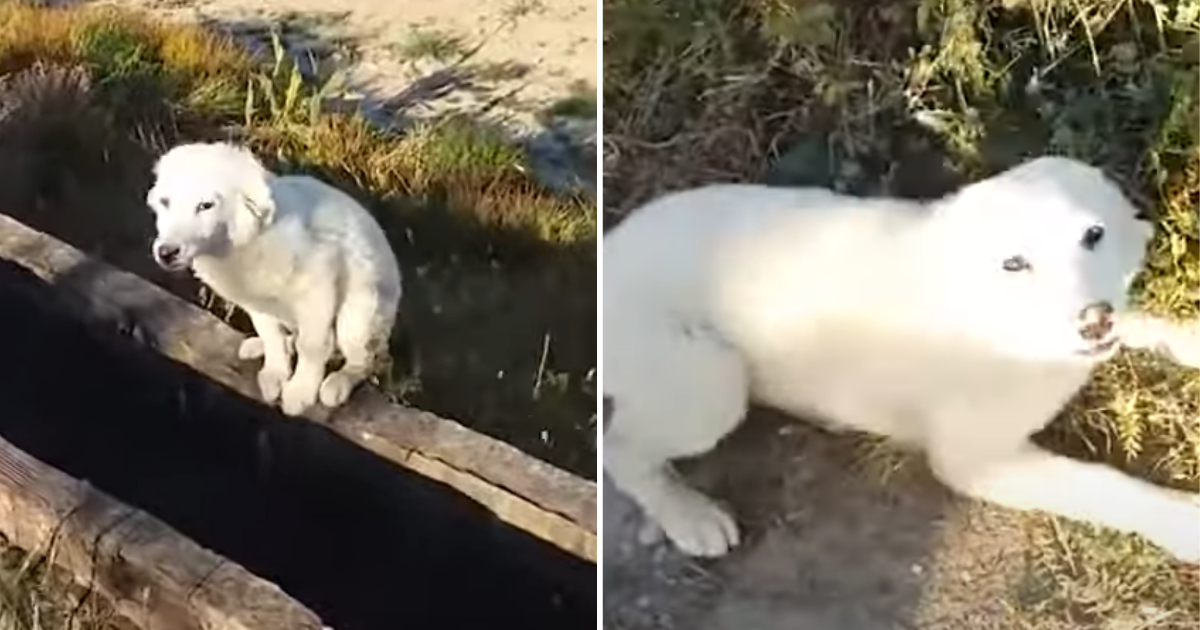
The information is current and up-to-date in accordance with the latest veterinarian research.
Learn more »
Cutting your dog’s nails can be a daunting task and is one some owners get a professional to tackle. Canine nails contain nerves and blood vessels that can bleed if you cut the nail incorrectly. That is where the right nail-cutting tool comes in handy.
A nail clipper with a safety guard can make nail cutting much safer and far less daunting. So, let’s look at how to use them effectively, and hopefully, nail-cutting day will be a stress-free event in the future.
The 6 Tips to Use Dog Nail Clippers With a Safety Guard
1. Check the Blades
If the nail clipper is a new tool, chances are it will be sharp. It’s a good idea to familiarize yourself with the anatomy of a nail clipper so you know what it feels like when it’s sharp. If you test the blade, it should ideally feel like brushing your finger across the side of an open pair of scissors.
If the blade is dull, it will crush your dog’s nails and can be uncomfortable even if you don’t cut the quick. Always check the clippers before you start and sharpen them, or buy a new pair if necessary.
Image Credit: sophiecat, Shutterstock
2. Position Your Dog
Each dog is going to be most comfortable in different positions. So whatever works for you both will be fine as long as your dog is comfortable and you can easily reach their paws.
If they’re small enough, they could lie in your lap, while some owners prefer having their dog on a higher surface so they can stand to cut their nails. Introduce grooming into your dog’s life as early as possible so it isn’t an entirely new experience when they’re an adult.
3. Set up Clippers
Depending on which brand of nail clipper you’re using, you might need to turn the safety lock off so they open. You will then have to move the safety guard over so it sits between the blades when they’re open.
This will look awkward, and it can feel like the safety guard gets in your way, but that’s what it’s designed to do. It protects the nail, so you can’t put too much of your dog’s nail through the blades and accidentally cut too much off. It’s not completely foolproof though, so you will have to still judge yourself if you are likely to cut the quick.
Image Credit: Matt Howard, Shutterstock
4. Cut the Nails
Start small and cut only a small section of the nail. If your dog has white nails, you will be able to see where the blood vessels stop. The quick will appear pink, and the nail will look white where the vessels end. The blood vessels are harder to see on black nails.
If your dog has a mixture of black and white nails, many people will use the white nail to guide how far to cut. If they are all dark, cut the nail very slowly and if your dog shows any signs of discomfort, stop, and leave the nail a bit longer the next time. However, that is where your guard comes in handy, as it’s easier to control how much of the nail you’re putting between the blades.
5. Prepare for Bleeding
Even with all precautions in place, accidents happen. You could make a mistake, or your dog might move at the last second, and you could cut off too much. It’s important to keep styptic powder nearby in case you have to stop the bleeding.
First, remain calm. When the nail bleeds, it does so dramatically that it can look worse than it is. A pea-sized amount of styptic powder pressed into the nail tip will usually do the job, and you can assess the damage. Soap or cornstarch will also work if you don’t have any styptic powder.
If the nail bleeds for more than five minutes, contact your veterinarian.
Image Credit: Tsuguliev, Shutterstock
6. End With a Reward
Ending with treats, cuddles, or playtime will show your dog they did a great job, and there’s nothing to worry about. It’s important to reward your dog even if you don’t finish all the nails. If this is your dog’s first experience with having their nails cut, don’t try to rush the process.
Keep checking in with your dog, and if they seem stressed out or too anxious to continue, take a break and return to it later. Grooming is a marathon, not a sprint, so take it at your dog’s pace.
Frequently Asked Questions (FAQ)
Are There Different Types of Nail Clippers?
There are different styles of nail clippers, but not all styles have a safety guard.
Plier: Plier nail clippers will have a spring between the blades and resemble pliers, hence the name. They come in different sizes to suit different dogs and are generally the clippers that come with safety guards and locking systems. This style will crush the nails if they’re dull or your dog has brittle nails.
Guillotine: These are popular nail clippers as they give the owner more control and slice cleanly through the nail. However, they can be one of the trickier clippers to get used to operating.
Scissors: These are less powerful than pliers but work in much the same way. For this reason, they’re generally recommended for small dogs with softer nails. They can strain your wrist as they have less power behind them than pliers.
Nail grinder: You have more control with the grinder, and mistakes tend to happen less often. However, it’s a slow process, and dogs can become scared from the noise and vibrations.
How Do You Know Your Dog’s Nails Need Cut?
If you can hear your dog’s nails on the floor when they walk, it indicates they need their nails clipped. A dog’s nails shouldn’t touch the ground when standing.
If Your Dog’s Nails Are Incredibly Long, Can You Just Cut off a Large Chunk?
No. If your dog’s nails haven’t been cut for a while, you still need to be extra careful because the quick is likely to have grown as well. Continue to use the guard and cut small amounts off. Allow time for the quick to recede and do a small trim each week for several weeks.
Does Walking Your Dog Shorten Their Nails?
It depends on the surface you are walking your dog on. The grass is too soft to wear down nails, but rough terrain or pavement will. However, you should still check your dog’s nails regularly and clip them before they get too long.
Plus, a dog’s dew claw won’t be worn down by walking. These nails are found on the inside of the leg where a thumb would be if dogs had thumbs! Rarely, there’s more than one on each leg and they usually do not occur on the back legs. The dew claws can get caught when your dog plays, so keeping them short is essential. If you neglect these claws, they can curl and even grow into the skin, which is painful.
Final Thoughts
Cutting your dog’s nails can be challenging, especially if you have an anxious dog. There is no shame in taking your dog to a professional, but if you want to tackle this part of your dog’s grooming routine at home, a nail clipper with a safety guard will make the job easier.
The clippers might feel awkward to use at first, as the guard will feel like it’s in the way. However, it will ensure that you don’t position too much of your dog’s nail between the blades, which can result in you cutting the quick and making your dog bleed.
Once you’ve used them a few times, you’ll get used to handling them, and in no time, you’ll be a pro. Even if your dog never becomes the biggest fan of having their nails cut, they will undoubtedly be grateful for the cuddles and treats afterward!
Featured Image Credit: Victoria Sharratt, Shutterstock






